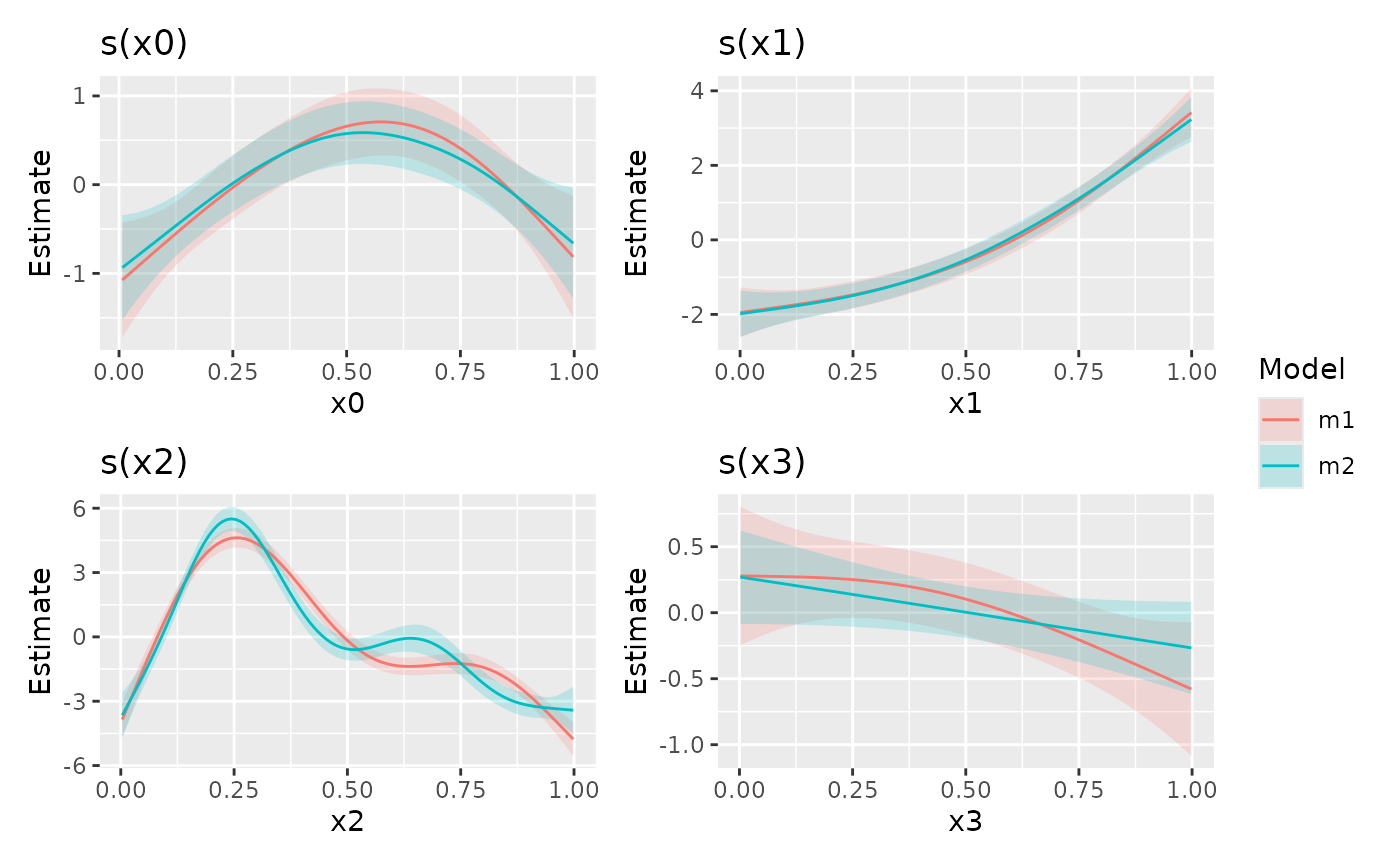Compare smooths across models
Usage
compare_smooths(
model,
...,
select = NULL,
smooths = deprecated(),
n = 100,
data = NULL,
unconditional = FALSE,
overall_uncertainty = TRUE,
partial_match = FALSE
)Arguments
- model
Primary model for comparison.
- ...
Additional models to compare smooths against those of
model.- select
character; select which smooths to compare. The default (
NULL) means all smooths inmodelwill be compared. Numericselectindexes the smooths in the order they are specified in the formula and stored inmodel. Characterselectmatches the labels for smooths as shown for example in the output fromsummary(object). Logicalselectoperates as per numericselectin the order that smooths are stored.- smooths
- n
numeric; the number of points over the range of the covariate at which to evaluate the smooth.
- data
a data frame of covariate values at which to evaluate the smooth.
- unconditional
logical; should confidence intervals include the uncertainty due to smoothness selection? If
TRUE, the corrected Bayesian covariance matrix will be used.- overall_uncertainty
logical; should the uncertainty in the model constant term be included in the standard error of the evaluate values of the smooth?
- partial_match
logical; should smooths be selected by partial matches with
select? IfTRUE,selectcan only be a single string to match against.
Examples
load_mgcv()
dat <- data_sim("eg1", seed = 2)
## models to compare smooths across - artificially create differences
m1 <- gam(y ~ s(x0, k = 5) + s(x1, k = 5) + s(x2, k = 5) + s(x3, k = 5),
data = dat, method = "REML"
)
m2 <- gam(y ~ s(x0, bs = "ts") + s(x1, bs = "ts") + s(x2, bs = "ts") +
s(x3, bs = "ts"), data = dat, method = "REML")
## build comparisons
comp <- compare_smooths(m1, m2)
comp
#> # A tibble: 8 x 5
#> .model .smooth .type .by data
#> <chr> <chr> <chr> <chr> <list>
#> 1 m1 s(x0) TPRS NA <tibble [100 x 3]>
#> 2 m2 s(x0) TPRS (shrink) NA <tibble [100 x 3]>
#> 3 m1 s(x1) TPRS NA <tibble [100 x 3]>
#> 4 m2 s(x1) TPRS (shrink) NA <tibble [100 x 3]>
#> 5 m1 s(x2) TPRS NA <tibble [100 x 3]>
#> 6 m2 s(x2) TPRS (shrink) NA <tibble [100 x 3]>
#> 7 m1 s(x3) TPRS NA <tibble [100 x 3]>
#> 8 m2 s(x3) TPRS (shrink) NA <tibble [100 x 3]>
## notice that the result is a nested tibble
draw(comp)
